Chronicle on the Revolutionary Road: Our local archaeology chapter takes a field trip to Fort Montgomery on the Hudson.
The American revolutionaries lost this battle of October 6, 1777 badly, but the writing was already on the wall for the British colonial army.
A replica cannon at Fort Montgomery. The real thing could fire 32 pound cannonballs four miles down the Hudson River. (Photos by Michael Balter)
The 250th anniversary of the signing of the Declaration of Independence is not until next year, but from all the revolutionary fervor in Westchester County and environs one would think it was just around the corner. It’s understandable, because our local region played a major role in the American Revolution, with notable battles and lots of intrigue (think Benedict Arnold, Major John André, and all that.)
In that spirit, our local archaeology group, the Louis A. Brennan, Lower Hudson Chapter of the New York State Archaeological Association—headquartered at the Nature Center in Croton Point Park—organized a field trip this past Sunday to the Fort Montgomery State Historic Site, scene of an important battle of the American Revolution.
(Full disclosure: The editor of the Chronicle is on the board of the local chapter and so cannot be expected to be the slightest bit objective in this report; he even took sides in the American Revolution.)
Before readers get too excited, we have to make clear that in this particular battle, the American revolutionaries lost badly to the British, who briefly occupied the fort after the dust and smoke settled and then burned it down. But the historians tell us that the distraction of this battle put the British in a worse position for the Battle of Saratoga, which they then proceeded to lose—marking what historians also say was a turning point in the war.
Since we were a group of archaeologists and archaeology buffs (plus one archaeology journalist) it was appropriate that our tour guide, Jess, was herself an archaeologist, who had specialized in the study of ancient skeletal remains.
We started off in the site’s excellent museum, with views of the Hudson out the back windows. After showing us a short film that featured an enthusiastic re-enactment of the battle by sturdy and determined looking actors, Jess took us through the details of the battle and the military context (see map below.) The display cases are stuffed with lots of artifacts from the fort, recovered during several excavations beginning in the early 20th century.
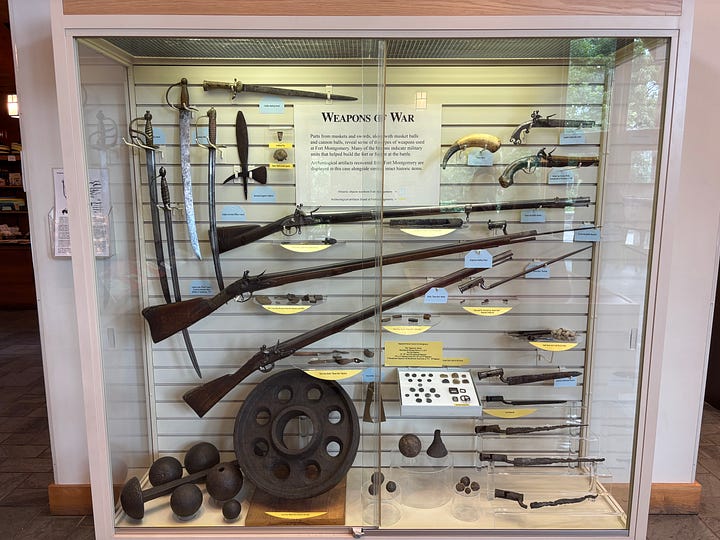

After giving us the full historical context, Jess led us outside and into the 14 acres of grounds the fort occupied, taking us from one building to another.
The most important archaeological excavations at Fort Montgomery were conducted beginning in 1958, and then more extensively from 1967 to 1971, by a team led by Jack Mead, known as “The Father of Fort Montgomery Archaeology.” Jack was a Jack of all trades—a painter, sculptor, zoo director, and eventually archaeologist—and his excavations were noted for their systematic and disciplined nature (which includes meticulous recording of architecture and artifacts.)
As a result, archaeologists developed a very rich picture of life at the fort, including a nuanced view of the social and cultural nature of life there. For example, study of the barracks where soldiers and officers lived, as well as the pottery and other artifacts they used, demonstrated that as revolutionary as the Americans might have been, they still observed the rituals of hierarchy and social class. They may have fought for liberty, but equality was not on the agenda during this particular war (and of course it took nearly another century before slavery was abolished.)
In addition to the remains of barracks and fortifications, we also visited the latrine used by ordinary soldiers (see below), the magazine where powder for the huge cannons was stored, and the cannon battery that faced the Hudson River and was supposed to blast away British ships coming up from New York City, where the royalists had their stronghold.
(In response to a question, Jess said it was unlikely that the revolutionaries had ever actually hit a ship with their 32 pound cannonballs, even though the guns had a range of nearly four miles.)

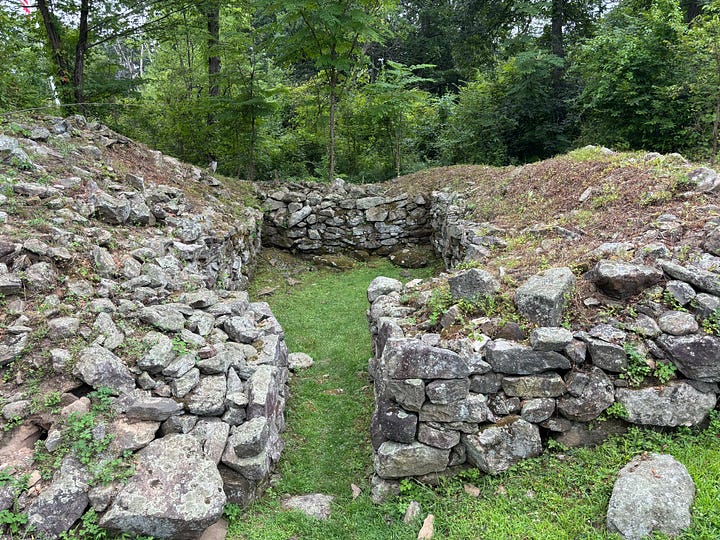
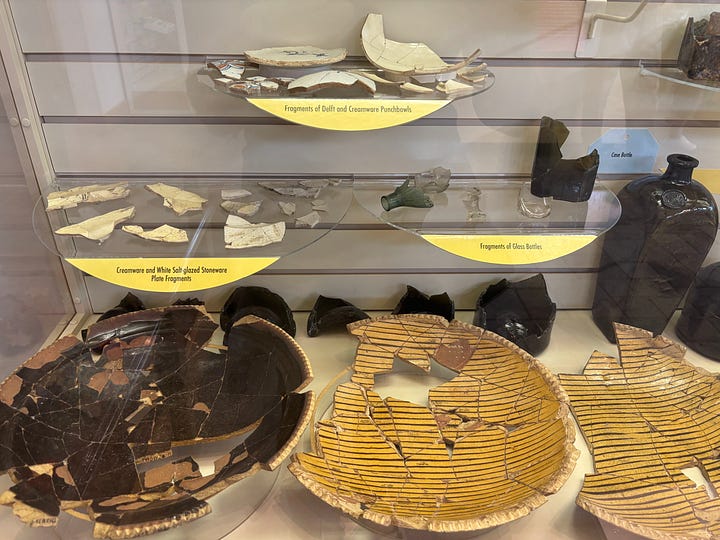
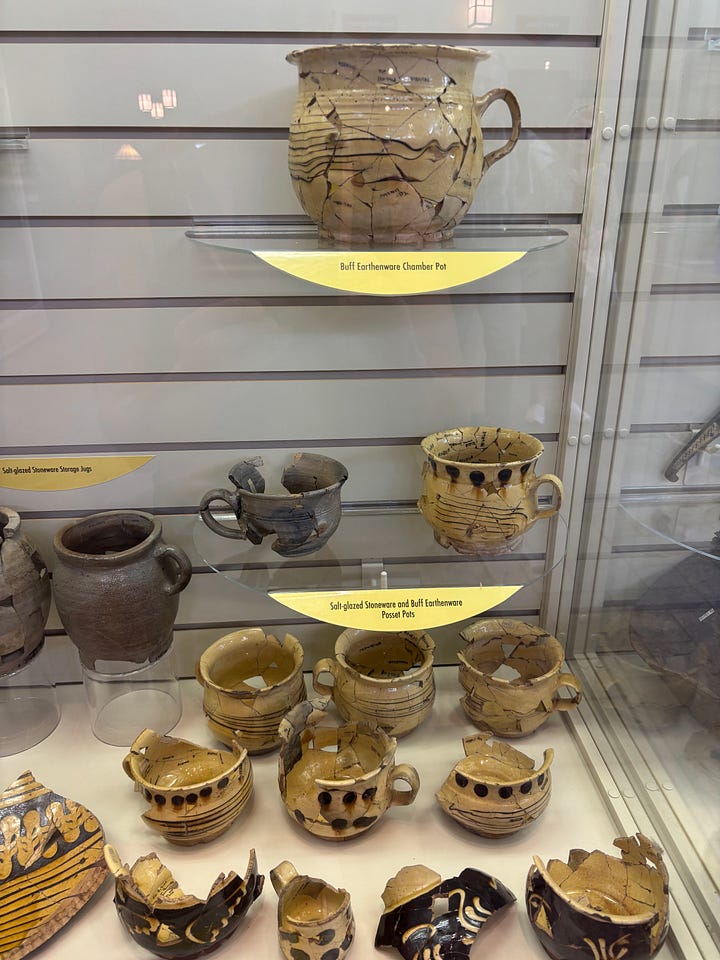
It was a warm and humid day, so after visiting the cannons (facsimiles, but still impressive) we returned to the museum to stock up on historical publications and the bottles of water the staff sells at the front desk. We then decamped to the parking lot, still glowing with revolutionary fervor but glad the American Revolution had been fought and won so long ago.
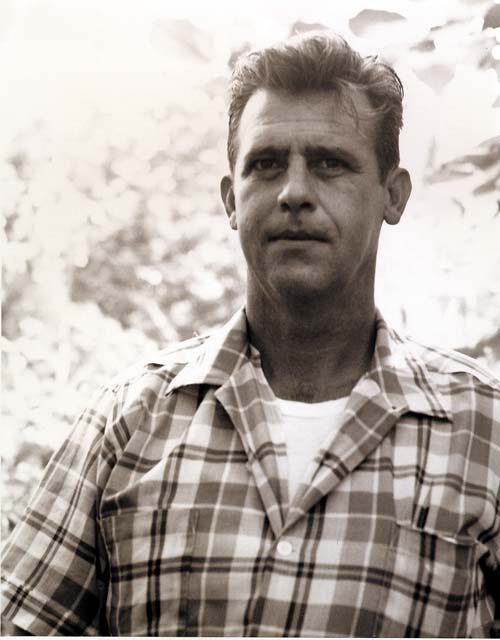
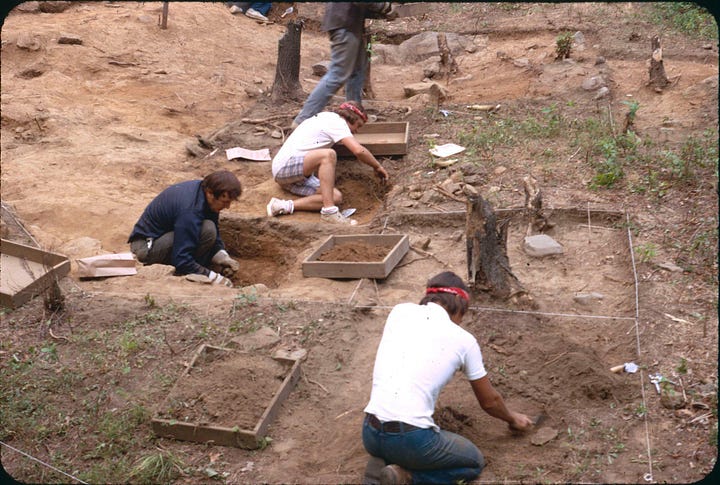
************************************************************************************************************
To share this post, or to share The Croton Chronicle, please click on these links.







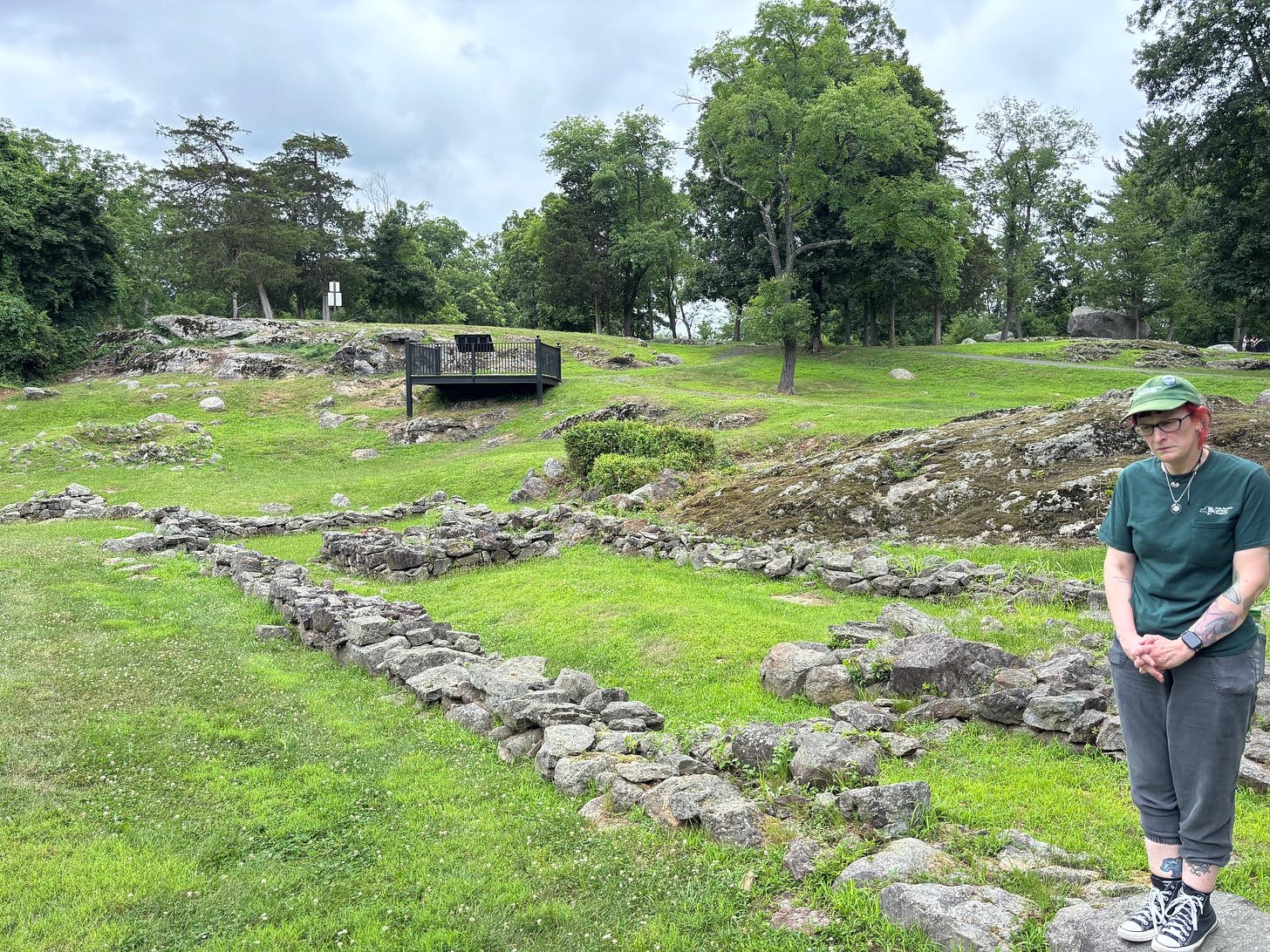

And thanks for the photos of the salt glazed stoneware in particular.
Nice write-up!